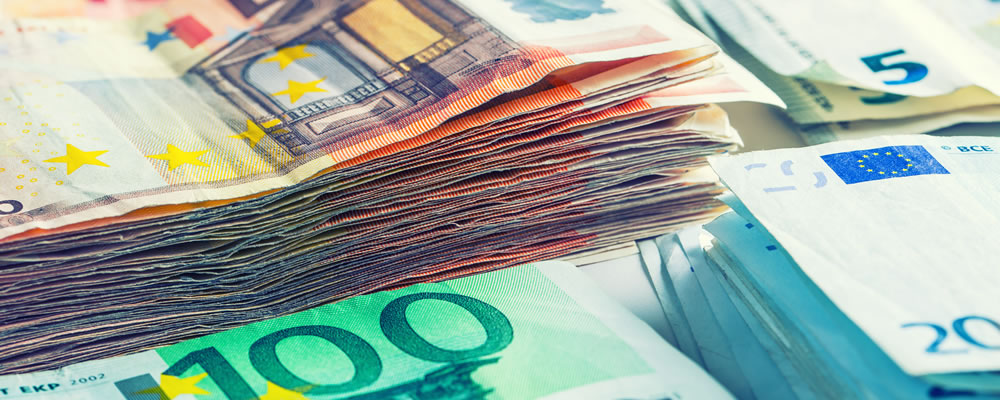With progress on the CETA treaty stalling, Euro exchange rates have struggled to particularly capitalise on stronger data from the Eurozone.
- Euro exchange rates given boost by rising German import prices – Signs continue to point towards higher inflationary pressure
- Pound slumped in response to Chancellor of the Exchequer comments – Market sentiment towards Sterling remains jittery
- Fed rate hike speculation failed to drag on EUR USD exchange rate – Pace of monetary tightening expected to remain slow
- UK GDP in focus – EUR GBP exchange rate forecast to trend higher on slowing economic growth
Improved US Home Sales Failed to Dent EUR USD Exchange Rate Uptrend
Despite an unexpectedly strong improvement in new home sales in September the US Dollar remained on a weaker footing towards the close of Wednesday’s European session. This was in part attributable to a sharper increase in wholesale inventories, which suggested that domestic consumer demand is slowing. As a result the EUR USD exchange rate continued to trend higher in the region of 1.09.
(Previously updated at 10:29 26/10/16)
The mood towards the Pound has remained muted at best, with investors reluctant to buy into Sterling ahead of the third quarter UK GDP report.
Solid German Data Boosted Euro Exchange Rates Despite CETA Worries
Demand for the Euro (EUR) has been somewhat muted this week, despite the latest raft of Eurozone data proving generally positive. Although the German IFO Business Sentiment Survey indicated that confidence had continued picking up within the Eurozone’s powerhouse economy, this failed to substantially boost the single currency. In large part this was due to residual market worries over the future of the EUR-Canada free-trade deal, with the stanch opposition of Wallonia suggesting that the treaty is unlikely to be signed in the near future.
There was some relief from the news that the German Import Price Index had strengthened further than forecast in September, recovering from -0.2% to 0.1% on the month. This suggested that inflationary pressure within the domestic economy is continuing to build, boding well for the outlook of the wider currency union. As a result the Euro Pound (EUR GBP) exchange rate was encouraged to trend higher, still benefitting from the relative weakness of Sterling.
Pound Sterling (GBP) Softness Forecast on Weaker UK GDP
Volatility continued to characterise Pound (GBP) exchange rates on Tuesday, with the currency suffering another sharp slump despite the lack of fresh domestic data. Investors were not encouraged by commentary from Chancellor of the Exchequer Philip Hammond, who noted that the considerations of EU nations within Brexit negotiations were likely to be political as well as economic. While Hammond also pledged to put the financial sector at the heart of negotiations this assurance was of limited impact, with the mood towards the Pound remaining bearish.
Pressure is expected to mount on the Pound ahead of Thursday’s UK GDP data, which will be the first major measure of domestic economic activity since the EU referendum. Forecasts point towards a loss of momentum, with the measure expected to weaken from 0.7% to 0.3% on the quarter. Should conditions be found to have deteriorated further than expected, the EUR GBP exchange rate could make some strong gains, with Brexit-based uncertainty likely to add downside pressure to the economy in coming months.
EUR USD Exchange Rate Trended Higher on Prospect of Slower Fed Tightening Cycle
Although markets are viewing a Federal Reserve interest rate hike in December as an increasingly likely scenario, this has failed to keep the US Dollar (USD) on a particularly bullish run. Recent comments from members of the Federal Open Market Committee (FOMC) have highlighted that policymakers expect monetary tightening to remain a slow and gradual process. As a result the Euro US Dollar (EUR USD) exchange rate trended higher, particularly in the wake of a disappointing slump in the October Consumer Confidence Index.
A number of US ecostats could prompt EUR USD exchange rate volatility on Wednesday afternoon, with any weaker showings likely to dent the odds of an imminent Fed rate hike.
Wholesale inventories are predicted to have risen on the month in September, suggesting that consumer demand weakened, while any softening in the Services PMI could point towards less economic resilience. However, as researchers at Westpac note:
‘A heavy slate of event risk next week – both ISM surveys, payrolls and an FOMC meeting – should tip the scales in favour of at least one more clear leg-up for the USD.’
Current Interbank Exchange Rates
At the time of writing, the Euro Pound (EUR GBP) exchange rate was trending narrowly around 0.89, while the Euro US Dollar (EUR USD) pairing was trending higher in the region of 1.09.



